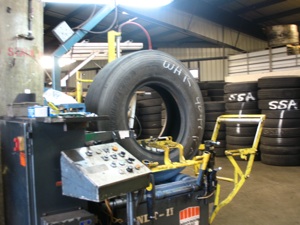Basically, there are two systems used
to retread a tire, Mold Cure and Pre Cure.
The reason both systems exist is because
of the economics of operating a retread plant and have nothing to
do with the quality of the finished product. Each system has unique
advantages, but both systems produce equally good retreaded tires.
The initial steps in retreading a tire
are the same regardless of which retreading system is used. These
steps are:
Primary Inspection
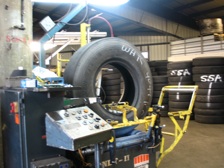 |
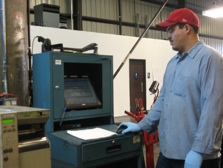 |
Each tire received in a retread plant is subjected to a very rigorous visual inspection. Inspectors may be assisted by the use of various non-destructive sophisticated inspection equipment available in the retread industry. Each tire is registered on Seaport’s Retread Production software, which will track each tire throughout the production process.
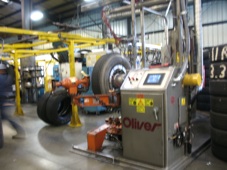 |
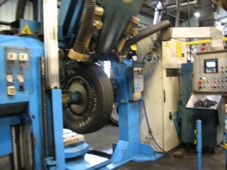 |
Buffing Station
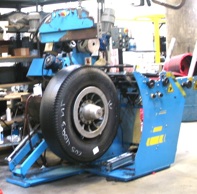 |
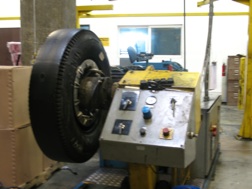 |
After inspection, tires have the old
tread mechanically removed on high speed buffers. Today's buffers
are extremely accurate and will remove the proper amount of old
rubber while truing the tire to an exact specified diameter and
radius. Seaport’s buffers are computer upgraded with each manufacturer’s
specification. Each tire is buffed to industry standards to assure
a high quality product.
Rubber Application
Application of new rubber in the tread
area. Here is where the systems differ.
Pre-cure Tread Builder and Cushion Extruder
Pre-cure Curing Chamber
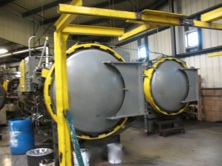 |
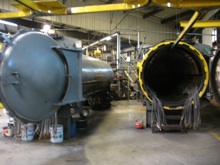 |
In the pre-cure system, the tread rubber
has already been vulcanized with the new tread design. The buffed
tire has a thin layer of cushion gum wrapped around the tread area
and the pre-cured tread is then applied. The cushion gum serves
to bond the pre-cured tread to the tire. The tire is then placed
in a curing chamber and the pre-cured tread becomes adhered to the
tire through a vulcanizing process very similar to that used in
new tire construction.
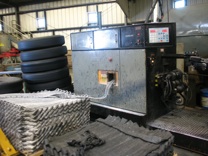 |
Computerized Mold
cure Rubber Extruder
In the mold cure system, unvulcanized
tread rubber is applied to the buffed tire. The tire is then placed
into a rigid mold, which contains the tread design in the tread
area. The mold is heated and the rubber in the tread area vulcanizes
and adheres to the tire with the new tread design molded in. Again,
this vulcanization process is very similar to that used in new tire
construction. Both systems require a combination of time, heat and
pressure to create the vulcanization of the new rubber to the tread
area of the tire.
Rigid Molds
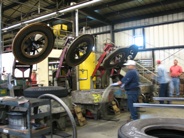 |
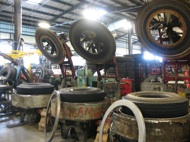 |
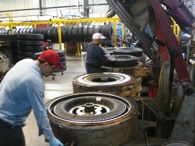 |
Final Inspection
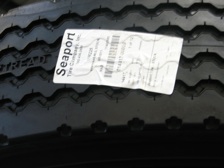 |
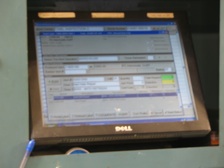 |
The retreaded tire is subjected to a
final inspection. This inspection insures that only tires that meet
industry quality standards are allowed to leave the retread plant.
The finalized tire is registered in the computer and transferred
electronically to Seaport’s shipping department. The completed tire
is then ready to return to full service and a second (or third)
life as a safe and economical alternative to high priced new tires.
 |
